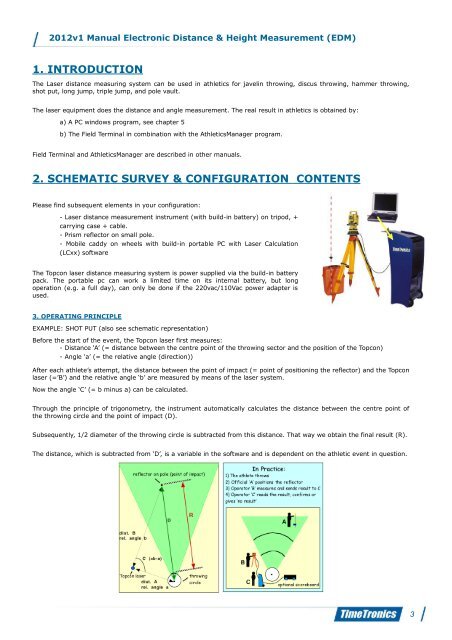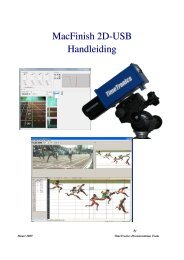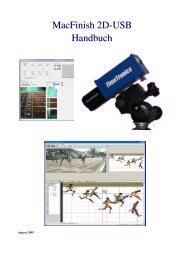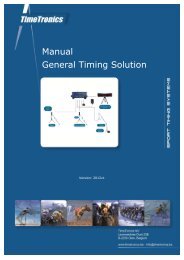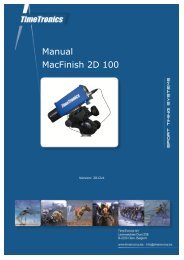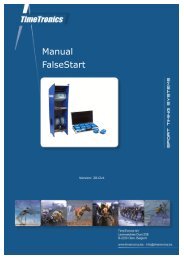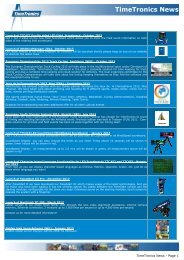Manual EDM
Manual EDM - TimeTronics
Manual EDM - TimeTronics
- No tags were found...
You also want an ePaper? Increase the reach of your titles
YUMPU automatically turns print PDFs into web optimized ePapers that Google loves.
2012v1 <strong>Manual</strong> Electronic Distance & Height Measurement (<strong>EDM</strong>)<br />
1. INTRODUCTION<br />
The Laser distance measuring system can be used in athletics for javelin throwing, discus throwing, hammer throwing,<br />
shot put, long jump, triple jump, and pole vault.<br />
The laser equipment does the distance and angle measurement. The real result in athletics is obtained by:<br />
a) A PC windows program, see chapter 5<br />
b) The Field Terminal in combination with the AthleticsManager program.<br />
Field Terminal and AthleticsManager are described in other manuals.<br />
2. SCHEMATIC SURVEY & CONFIGURATION CONTENTS<br />
Please find subsequent elements in your configuration:<br />
- Laser distance measurement instrument (with build-in battery) on tripod, +<br />
carrying case + cable.<br />
- Prism reflector on small pole.<br />
- Mobile caddy on wheels with build-in portable PC with Laser Calculation<br />
(LCxx) software<br />
The Topcon laser distance measuring system is power supplied via the build-in battery<br />
pack. The portable pc can work a limited time on its internal battery, but long<br />
operation (e.g. a full day), can only be done if the 220vac/110Vac power adapter is<br />
used.<br />
3. OPERATING PRINCIPLE<br />
EXAMPLE: SHOT PUT (also see schematic representation)<br />
Before the start of the event, the Topcon laser first measures:<br />
- Distance ‘A’ (= distance between the centre point of the throwing sector and the position of the Topcon)<br />
- Angle ‘a’ (= the relative angle (direction))<br />
After each athlete’s attempt, the distance between the point of impact (= point of positioning the reflector) and the Topcon<br />
laser (=’B’) and the relative angle ‘b’ are measured by means of the laser system.<br />
Now the angle ‘C’ (= b minus a) can be calculated.<br />
Through the principle of trigonometry, the instrument automatically calculates the distance between the centre point of<br />
the throwing circle and the point of impact (D).<br />
Subsequently, 1/2 diameter of the throwing circle is subtracted from this distance. That way we obtain the final result (R).<br />
The distance, which is subtracted from ‘D’, is a variable in the software and is dependent on the athletic event in question.<br />
3


